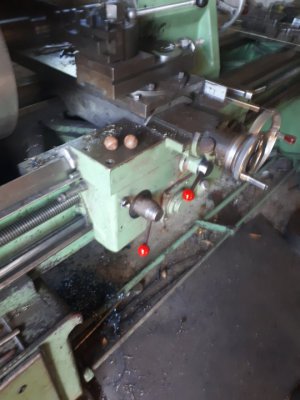I made a gear. My first gear. It’s a modulus 1.5 62 tooth change gear for the Takisawa, with a 22mm hole with a 3/16” key, I tell you, if you read the page after page in Machinery’s Handbook, it looks formidable. But “metric” gears, identified with a mod number, are a cinch. Here’s how it goes: First, you need to know the outside diameter of the gear. Ok, it’s the number of teeth plus two, times the mod number, answer is in mm. So, (62+2)*1.5=96mm. Make a blank that diameter, thickness whatever your other gears are. Then, buy a set of mod 1.5 cutters, $80 on eBay. Mine were a 22mm arbor hole, so I had (got) to make an arbor. Easy, and making it all in one lathe setup means zero runout issues. Then get a $275 dividing head, also eBay. It’s a 40:1 crank ratio, so for 62 teeth, 40/62 is zero remainder 40/62, from third grade math or so. 40/62 is also 20/31, so use the 31 hole ring on the dividing plate, and move 20 holes for each teeth. I had an expanding mandrel that I stuck the gear blank on and chucked in the dividing head. Align the dividing head on the mill table so the mandrel indicates square with X axis and parallel to the table. Position the midpoint of the cutter vertically with the midpoint of the blank, touch off and advance the cutter to a depth of (2.25) *mod number = 2.25*1.5 = 3.375mm depth of cut. Now just make the cut, turn the dividing head crank 20 holes, and repeat 62 times.
Maybe that one gear doesn’t look like a bargain, but the next one is only half as much.



